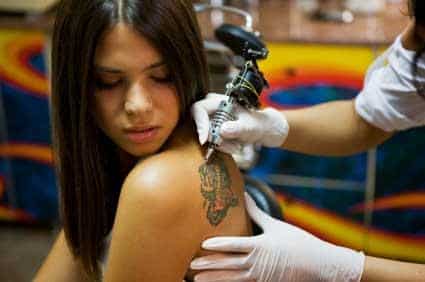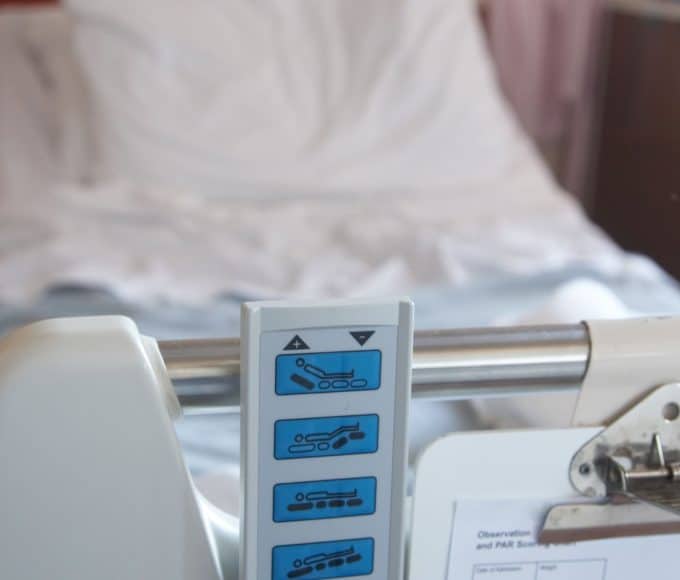 For some, the human body and all of the skin on it is a big, blank canvas just waiting for an artist to display their work on it. For many others, adding body art is a symbol and an outright stamp of something that is important or meaningful to someone. And for even more, getting a new tattoo somewhere on their body is just plain fun.
For some, the human body and all of the skin on it is a big, blank canvas just waiting for an artist to display their work on it. For many others, adding body art is a symbol and an outright stamp of something that is important or meaningful to someone. And for even more, getting a new tattoo somewhere on their body is just plain fun.
Sure, it’ll give you a great adrenaline rush to get a tattoo, and sure, it’ll display something artistic or symbolic everywhere you go for the rest of your life, but there is much more to tattoos than the mainstream view makes you believe. In fact, there are many risks, sometimes even deadly risks, associated with getting a tattoo.
So before you head down to your local tattoo shop for your first piece or many one of your many pieces of ink, take a minute to think, and really understand what you’re risking by permanently inking your body.
Infection
Keep in mind when you’re considering a tattoo that the tattoo artist uses one or a series of small needles to prick tiny holes in the skin where they deposit pigmented ink directly into the skin. This means that there is an open wound where your new tattoo is immediately after it’s done.
As with any open wound, the risk of infection is high if it’s not properly cared for. Proper care of a new tattoo should include following all instructions from the tattoo artist, including regular cleanings and antibiotic ointment applications. Signs of a possible infection may include redness, swelling and a pus-like substance draining out of the affected area.
Allergic Reactions
Depending on what the pigment is made from, it’s highly possible for a person to have an allergic reaction in their skin to the tattoo ink after it is applied. The tattoo becomes itchy and starts to look like a rash.
This can occur even years after getting the tattoo done, especially if your tattoo contains some certain pigments of ink, such as red, green, yellow and blue.
Blood-Borne Diseases
Although rare, it is possible to contract a blood-borne disease from improper tattooing techniques. Since the needles used to give tattoos are actually piercing the skin, bleeding may, and usually does, occur throughout the process. If the needle isn’t cleaned from one client to the next, it could pose a major threat to the second person.
Hepatitis B, Hepatitis C, tetanus, herpes and potentially even HIV are all diseases that can be contracted from non-sterile needles, including those used in the tattooing process.
Pain/Discomfort During MRI
Another risk of tattoos to note is that many people suffer from pain or discomfort at the site of the tattoo when they go in for an MRI. This is because many pigments are made with metallic ingredients, and the metal reacts strangely with the magnetic properties of the MRI. The image produced by the MRI may also be distorted and difficult for a doctor to read as a result of this interaction.
Protecting Yourself
Despite the risks involved with getting a tattoo, many people still choose to get them, and do so without experiencing any health problems whatsoever after the fact. If you’re still considering a tattoo, make sure you protect yourself when you go to get it.
- Make sure you aren’t ill. Some bacterias that may be on the skin (like the strep throat bacteria, for example) could be implanted into the skin with the needle of the tattoo instrument. This could infect the entire body with the harmful bacteria.
- Find a well-respected tattoo parlor with trained professionals. Look around the shop when you get there for any kind of regulation documents. You won’t find state ones, most likely, as states don’t regulate tattooing much, but you’ll probably find some licensing documents that state that the artist underwent extensive training before being hired. Avoid cheap “underground” shops that will give tattoos to anyone.
- Watch your tattoo artist sterilize their work space. Many times, a tattoo artist won’t let you near their station until it has been fully sterilized. That’s OK – you can still usually peek in to make sure they are sterilizing everything from their needles and ink containers to the very table you sit on for the process.
- Make sure your tattoo artist wears gloves. A fresh pair of gloves, at that. You don’t want any of the bacteria that may be on your artist’s hands to infect you.
- Be sure to properly care for your tattoo after you get it. It is an open wound – so treat it as such!
Getting a tattoo doesn’t have to be a dangerous experience, but knowing the risks and knowing how to protect yourself from them are two of the most important steps in avoiding the dangers.
Jessica McNeal is a freelance writer who is fascinated by tattoos. She only owns a couple of animal tattoo kits herself – she has yet to upgrade to human tattooing!














